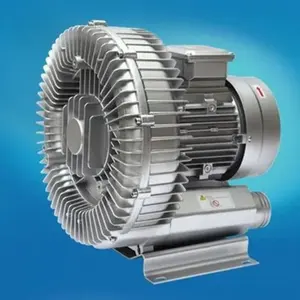
LWCA 50mm 220V/110V Tangential Fan Bearing Roller Rubber Cross Flow Blower Fan Metal For Air Curtain Heating Cooling


High Quality Ring Blower Manufacturers Regenerative Blower Company Side Channel Blowers Factory Vacuum Pump Suppliers





















A cupola furnace blower is an integral component in the metallurgical industry, designed for the efficient melting of metals. These blowers are pivotal in the operation of cupola furnaces, which are primarily utilized for melting ferrous metals but are also versatile enough to process non-ferrous metals such as aluminum and copper. The blower's role is to provide a consistent and controlled air supply, which is crucial for maintaining the necessary temperature and combustion conditions within the furnace.
The application of cupola furnace blowers spans across various types of industrial furnaces. From compact units adept at melting precious metals like gold and platinum to robust systems capable of handling up to 20 tons of material, these blowers support a range of melting capacities. They are essential in industries where the production of different steel types from iron scrap is a regular activity, as well as in facilities dealing with aluminum and copper.
Cupola furnace blowers are engineered to work within a power input range of 380v to 950v and can deliver working power from 180kw to 2,000kw. The construction of these blowers often involves high-grade insulation materials to safeguard against electrical hazards. They are also equipped with large capacitor banks that stabilize the current, ensuring the smooth operation of the furnace. The materials used in the blowers are selected for their durability and ability to withstand the harsh conditions of metal melting operations.
The operational efficiency of cupola furnace blowers is evident in their melting speed, which can vary between 40 to 60 minutes depending on the metal and furnace type. The ability to reach temperatures between 2,100 to 1,750 degrees Celsius makes them suitable for a wide array of metallurgical tasks. Additionally, the tilting mechanism of the melting pots, often powered by hydraulic systems, allows for an up to 95-degree tilt, facilitating the easy transfer of molten metal.
Safety is paramount in the design of cupola furnace blowers. Built-in safety systems, such as circuit breakers, are standard, providing automatic shutdown in the event of a fault. Furthermore, the integration of a PLC system offers precise control over the blower operations, enhancing both safety and efficiency. The water-cooling systems incorporated into each furnace play a critical role in managing the temperature of the hot metal, contributing to the overall safety of the melting process.
Selecting the appropriate cupola furnace blower is crucial for meeting specific industrial needs. While the size and capacity may vary, the functionality and reliability remain consistent across different models. Prospective buyers can explore a variety of these blowers, each designed to meet the demands of different melting applications, ensuring that operational requirements are seamlessly met.